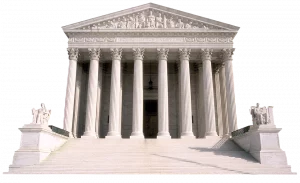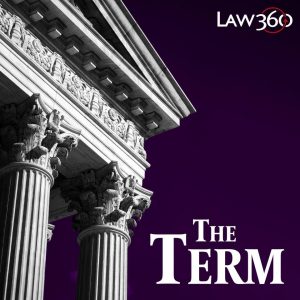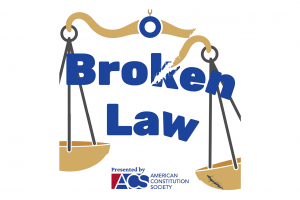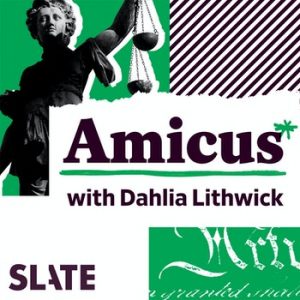On January 28, 2022, Associate Justice of the Supreme Court Stephen Breyer, nominated to the Court in 1994 by President Bill Clinton, announced his retirement at the end of the Court’s summer term. With a tenure of 27 years, Breyer is currently the second-longest serving justice on the Court. With Justice Breyer’s retirement, old and new debates again arise in the national discourse.
For the past several decades, each time a new justice fills a vacancy in the highest federal court in the U.S., the nomination and confirmation process take center stage in American politics. Routinely, major legislative business comes to a halt, as Congress, the Executive Branch, and many in the public turn their attention to the possible candidates that may become the next Supreme Court Justice. Potential nominees see their judicial record scrutinized, their legal writings tirelessly combed through, and, at times, their personal lives poked and prodded. In addition to the individual nomination process, in recent decades another discussion has grown louder. Serious talks of judicial reform, especially changes within the Supreme Court, have taken hold in recent decades.
Supreme Court reform is not a modern phenomena, as we can look at the presidency of Franklin D. Roosevelt as a prime example of proposed sweeping changes to the Supreme Court. Commonly referred to a «court packing», FDR unsuccessfully attempted to add Supreme Court Justices to the bench, in part, to help some of New Deal Era programs from being abolished by the Supreme Court’s Justices of the time.
There are renewed calls to look at the size and makeup of the Supreme Court. The current composition of the court, at nine justices, has remained the same since 1869. Additionally, the lifetime appointments of the Justices have also been a point of contention as of late. In response to growing debate, President Biden ordered, by executive action, a Commission on the Supreme Court made up of conservative, liberal, and progressive legal scholars to examine these and other issues surrounding the judicial branch of the federal government. In December of 2021, the commission submitted its almost 300-page report to the President.
In lieu of answers whether reforms, such as increasing the size of the court, should be made, the report instead focused its attention on the legality and feasibility if such reforms were to be attempted. According to news reports, this ‘analysis over advice’ approach was explicitly stated in the language of the executive order. Consequentially, many of the reform questions remain a topic for debate, but now with those engaged in the spirited conversations have a deeper understanding on how such reforms would take place, if the political motivation is there to do so.
This week’s Current Events resources examine the debate around Supreme Court and judicial branch reform. The resources shared provide information and context surrounding the debate and controversy centered on these reform conversations. To see additional resources on the Supreme Court nomination process, check out our Current Event on the topic.
Looking for more current events resources? Sign up at our We the Teachers Educator Resource Community page, where you can find all of our Current Events, and learn about our other programs!
Essential Questions, Vocabulary & Extend the Resources:
- In the United States, how are justices confirmed to the Supreme Court?
- In what ways does the confirmation of Supreme Court justices exemplify the idea of “checks and balances”?
- Why do some people argue that the judiciary has become more politicized in recent years?
- What are the best arguments for and against expanding the number of justices on the Supreme Court?
- In your opinion, do you think the Supreme Court has recently become polarized and politicized? If so, is that a problem? Explain.
- What kinds of reforms do you think would help lead to less polarization and politicization of the Judiciary?
Click here for a hardcopy of the Essential Questions & Equal Rights Amendment Vocabulary
Click here for a hardcopy of the Extend the Resources handout with suggested lesson activities and extensions
Videos:
Podcasts:
Will These Supreme Court ‘Reforms’ Go Anywhere?, The Term, Law360
The Case for Supreme Court Reform, Broken Law, American Constitution Society
Let’s Talk About How Truly Bizarre Our Supreme Court Is, The Erza Klein Show, The New York Times
Justice Breyer to Retire, Amicus With Dahlia Lithwick, Slate
Background Resources:
Presidential Commission on the Supreme Court of the United States, The White House
Final Draft Report, Presidential Commission on the Supreme Court of the United States, December 2021
History and Traditions, Supreme Court of the United States
Recent Articles:
Does the Supreme Court Look or Think Like America?, Bloomberg, September 26, 2020
How the Supreme Court confirmation process works, CNN, January 26, 2022
Justice Stephen Breyer, an influential liberal on the Supreme Court, to retire, NPR, January 26, 2022
Public’s Views of Supreme Court Turned More Negative Before News of Breyer’s Retirement, Pew Research Center, February 2, 2022
How Biden will choose the next Supreme Court nominee, SCOTUS Blog, January 26, 2022
Recent Editorials:
A politicized Supreme Court? That was the point, The Hill, October 20, 2021
Does the Supreme Court Need More Justices?, The New York Times, January 19, 2022
Don’t Pack the Court. Allow the Number of Justices to Float, Politico, January 15, 2022
Lesson Plans:
Supreme Court Activity, United States Courts
Franklin Roosevelt’s Proposal for Reforming the Supreme Court:168 Days of National Debate, Baltimore Public Schools
The Supreme Court: The Judicial Power of the United States, EDSITEment
The Challenge of Selecting an Ideal Supreme Court Nominee, Street Law Inc.
Bell Ringer: Importance of the Supreme Court, C-SPAN Classroom
Women Who Shaped the Supreme Court, Newseum Ed
Media & News Literacy Lesson Plans:
Media Literacy Resources – Newseum
Resource Library – News Literacy Project
News & Media Literacy Lessons – Common Sense
Media Misinformation, Viral Deception, and «Fake News» – University of Wyoming
Evaluating Sources in a ‘Post-Truth’ World: Ideas for Teaching and Learning About Fake News – New York Times Lessons





